Framing The Scene
“Crises can also be unique times of restructuring and innovation within markets.”
–Dr. Clare McAndrew, Founder, Arts Economics
FRAMING THE SCENE
When referenced, “the art market” is likely to be narrowly defined by the revenues of the largest auction houses and the worldwide sales of masterpieces. Within a series of articles, we’ll begin with that higher elevation perspective and then craft a view of the state-of-the-art market much closer to home.
Due to the global pandemic of 2020, gallery sales fell by an average of 36% in the first half of the year as nearly all galleries closed their locations into early summer. One-third of galleries downsized, losing an average of four employees. Renowned cultural economist Dr. Clare McAndrew, founder of Arts Economics, a research and consulting firm, completed her most recent research and published her report in September. Key findings in McAndrew’s study are that online sales accelerated, collectors remain active and engaged, improved price transparency was well received, and physical encounters with art continue to be highly valued. “Crises can also be unique times of restructuring and innovation within markets,” says McAndrew.
To demonstrate able shifts executed in Idaho, in the pages that follow, four galleries—Harvey Art Projects, Wood River Fine Arts, Gail Severn Gallery, and Gilman Contemporary—as well as Boise State University have shared their tactical maneuvers.
Historically, the art market’s business cycles tend to lag behind the stock market’s undulations and those of the broader economy. When stock valuations are rising, consumers increasingly feel financially secure and confident. The resulting wealth effect creates a change in consumers’ perceived wealth and accompanies a shift in spending. While the pandemic has put us in unprecedented times, there have been other periods of turmoil, both economic and otherwise, that have affected art sales in the last 30 years.
Pullbacks occur in the art market just as they do in the equities and bond markets. Three major art market pullbacks were brought on by the financial crisis of 2008-2009, the deflation of the dot-com bubble and the terrorist attacks in 2001, and the global recession of 1990-1991. The most recent declines recovered quickly, while the 1990 collapse took nearly a decade to bounce back.
In the post-COVID-19 recovery, the masterpiece market is expected to emerge intact. Low interest rates providing ample liquidity for the most affluent collectors will likely support masterworks’ prices. Established artists with auction histories or top gallery representation may experience a drop in prices as buyers apply pressure for discounts. Gallery closures and consolidations may most negatively impact the demand for art created by current artists without auction resumes. Those artists’ markets may need to reset their prices at lower levels. Even still, some will fail to recover.
GLOBAL CONNECTIONS: Harvey Art Projects | Julie Harvey
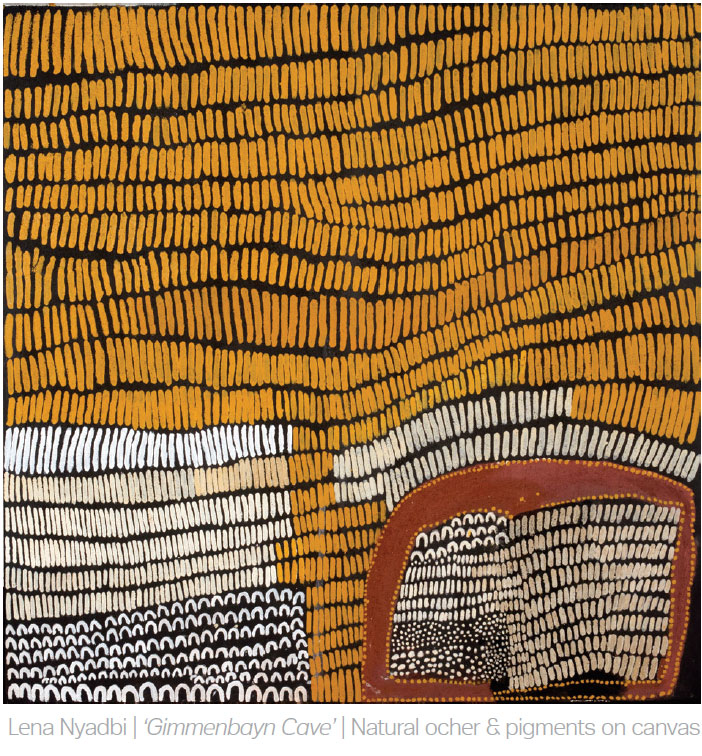
Harvey Art Projects’ founder, Julie Harvey, is a leading Aboriginal Art Specialist. For more than two decades, Harvey has dedicated herself to developing cultural awareness and appreciation of Australian Aboriginal Art in America through traditional exhibitions and satellite events.
“As an international gallery representing art from another country, we have always had a strong online presence due to sheer geography. Our clients are located worldwide, particularly in Europe, Australia, and, of course, here in the United States. We have always relied heavily on online platforms,” says Harvey.
The Harvey Art Projects gallery space in Ketchum opened in 2010 and was intended only as a summer pop-up venue. Strong collector interest, despite a challenging economic downturn, compelled Harvey to keep the doors open. Having come full circle, Harvey plans to shift in 2021 back to the original model for her business by closing the Sun Valley Road location.
Looking ahead, she will continue to expand the reach of Aboriginal Art globally, with a large exhibition planned each year in prominent metropolitan locations. Specifically, targeted international cities in Harvey’s sights are New York City, London, and Mexico City.
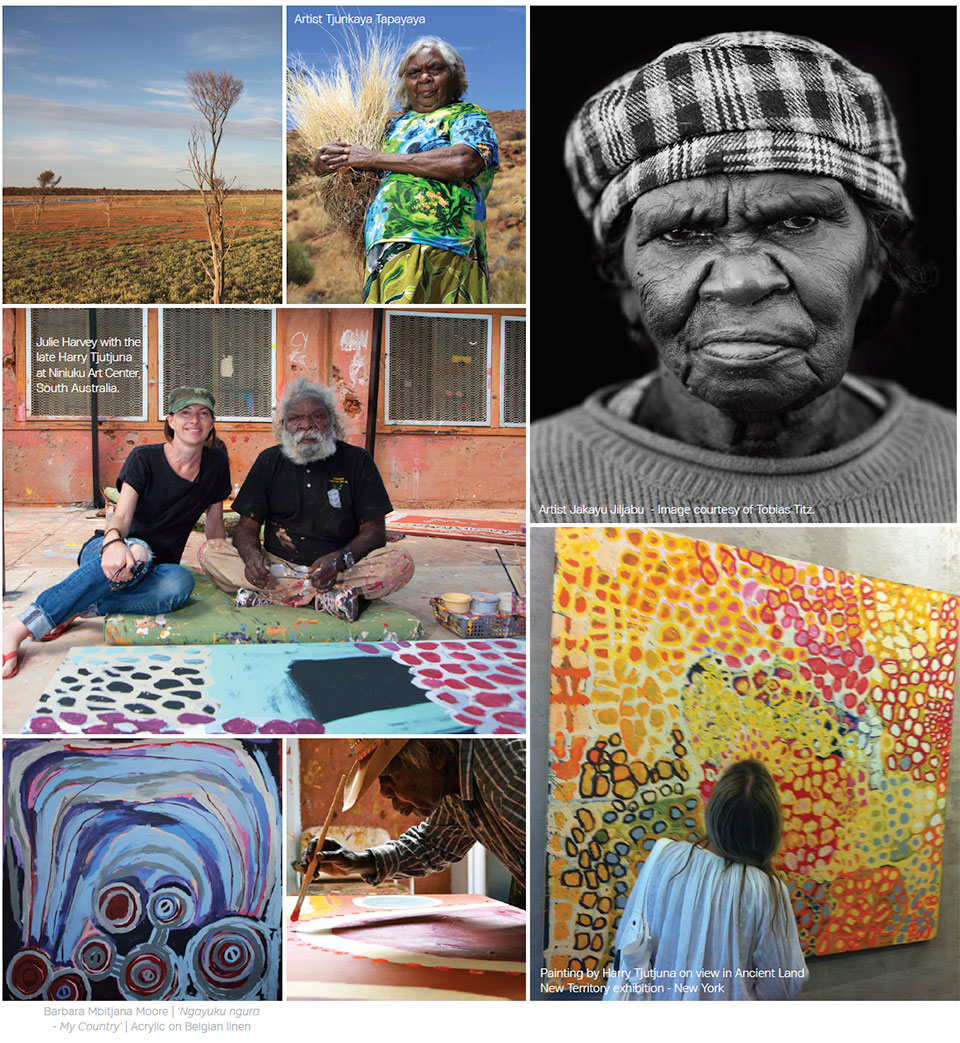
“We have experienced an increase in collectors’ interest within the physical gallery in Ketchum and will continue to educate and respond to inquiries. For the most part, our market is more global in reach,” she explains. “We find that people who are looking find us as we are the only gallery of this kind operating in the USA.”
“We have experienced an increase in collectors’ interest within the physical gallery in Ketchum and will continue to educate and respond to inquiries. For the most part, our market is more global in reach.”
–Julie Harvey, Aboriginal Art Specialist, Harvey Art Projects
Harvey has found that technology is advancing the way people can view and experience art. Increasingly, art buyers are not afraid to make online purchases, especially if they are experienced collectors. Having operated as an international gallery and consistently communicated with collectors through electronic means, Harvey has experienced little change in her communication style. In fact, she has experienced more robust online sales as the comfort level of remote buyers has increased during the pandemic.
“I believe it’s important to remain flexible for our audiences—we will operate a strong online presence with satellite pop-ups in the future to allow that ‘tactile’ experience, which as human beings, we still crave from time to time,” she says.
The idea of ‘tactile’ for many is the physical sensation of standing in front of art and emoting. Harvey operates in a location far removed from her represented artists and collectors. She recognizes the need to generate emotion from a distance. To accomplish this, Harvey seeks to build upon an essential foundation of education through stories, histories, and cultural awareness.
“These remote communities where artists and their families live and work are the heartbeat of all that we do. We, therefore, generate content that provides a larger story—a fuller picture that we hope helps close the gap and figuratively provides a sense of connection,” says Harvey. “Aboriginal Art is all about story—stories of people, place, culture, Tjukurrpa.”
WALLS TO WEB: Wood River Fine Arts | Tom Bassett
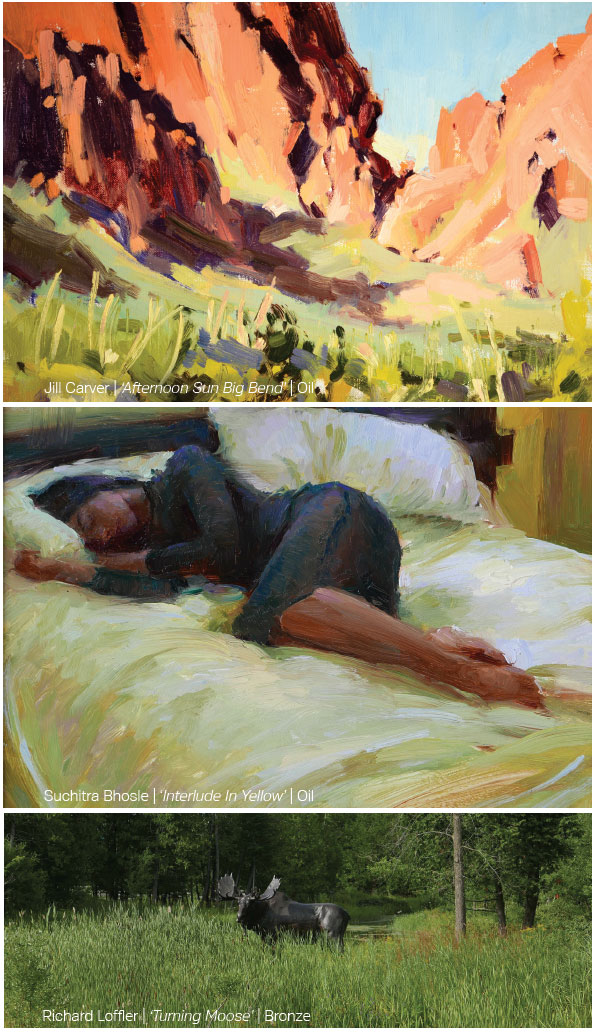
“Landscape is to American painting what sex and psychoanalysis are to the American novel,” said Robert Hughes, an Australian-born art critic, once described in The New York Times as “the most famous art critic in the world.”
Tom Bassett, the founder of the formerly Ketchum-based Wood River Fine Arts, adores plein air paintings, realism, landscapes, and western sculpture. He has represented the most established artists within his favorite genre over his 33-year career as an art dealer and gallery owner.
For Wood River Fine Arts, the March 2020 Idaho shelter-in-place mandate necessitated by the global pandemic was followed with a bright but brief reopening, only to be dampened by a flood in Bassett’s gallery. Bassett’s experiences in the first half of the year prompted him to reexamine his approach. He shuttered his physical retail space and expanded his footing with his internet presence.
Before the emergence of the health crisis in the United States and the Sun Valley region’s notoriety as a high per capita location for COVID-19, Bassett viewed his future with an eye on a slower pace. What has occurred instead is a rekindled enthusiasm.
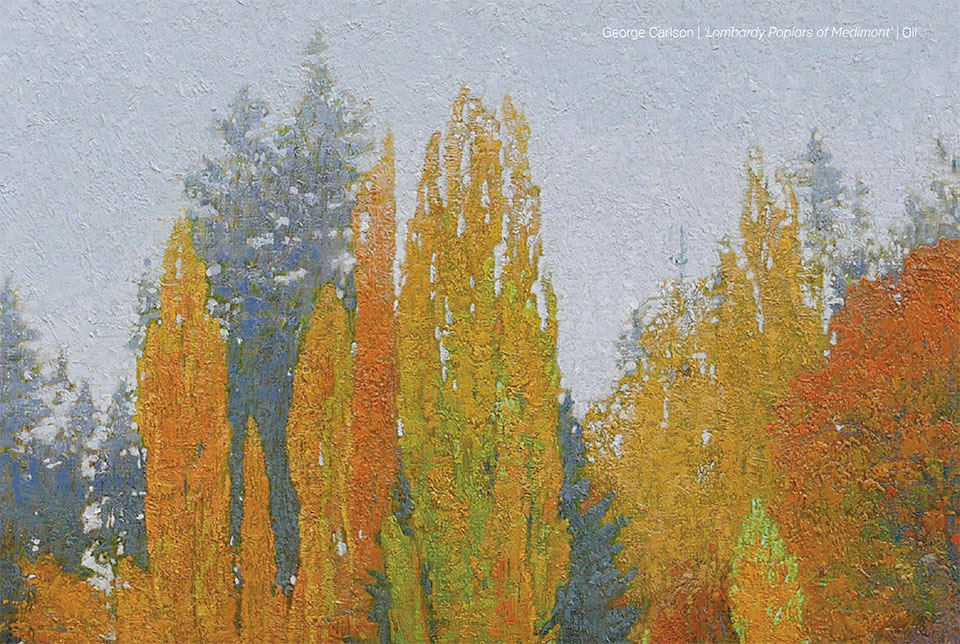
“It made me question what the true assets of the business are,” he says. Bassett sees himself as the link between the collectors and the art creators. He wasted no time contacting all the artists he represents, taking several road trips for in-studio visits. He shared with the artists how he could envision a different path for himself as a connector, one without a fixed location. Artists expressed their willingness to give it a chance.
Drawing on his relationships built over more than three decades, he has completely transitioned to working with both the collectors and the collected via private appointments and online engagement. The collectors Bassett serves have often physically experienced the works of the high-profile artists already. He acknowledges there are advantages to selling a known entity and also understands that the post-COVID-19 transition might be more challenging for less reputationally and commercially developed artists.
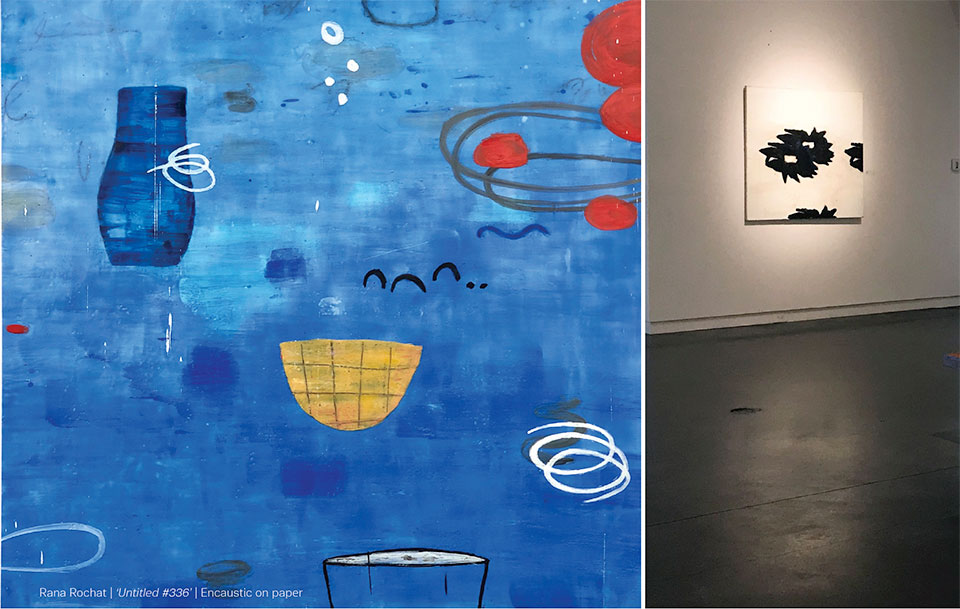
“Landscape is to American painting what sex and psychoanalysis are to the American novel.”
–Robert Hughes
Bassett admits it is “amusingly ironic” that painting is an archaic, low-tech endeavor and yet fine art is a visual medium that lends itself to examination on high-tech platforms. To that end, Bassett is reinvesting in online expansion, digital tools that allow for virtual exhibitions, and directories such as askART.com that provide greater market transparency with auction records, valuations, and provenance.
FINE ART SERVICES: Gail Severn Gallery | Gail Severn
“We are thrilled to be welcoming new residents to town as well as seeing all the familiar faces. We hope that many new residents will consider local galleries when choosing work for their homes, and we look forward to seeing them in the gallery.”
–Meredith Skillman, Gallery Registrar, Gail Severn Gallery
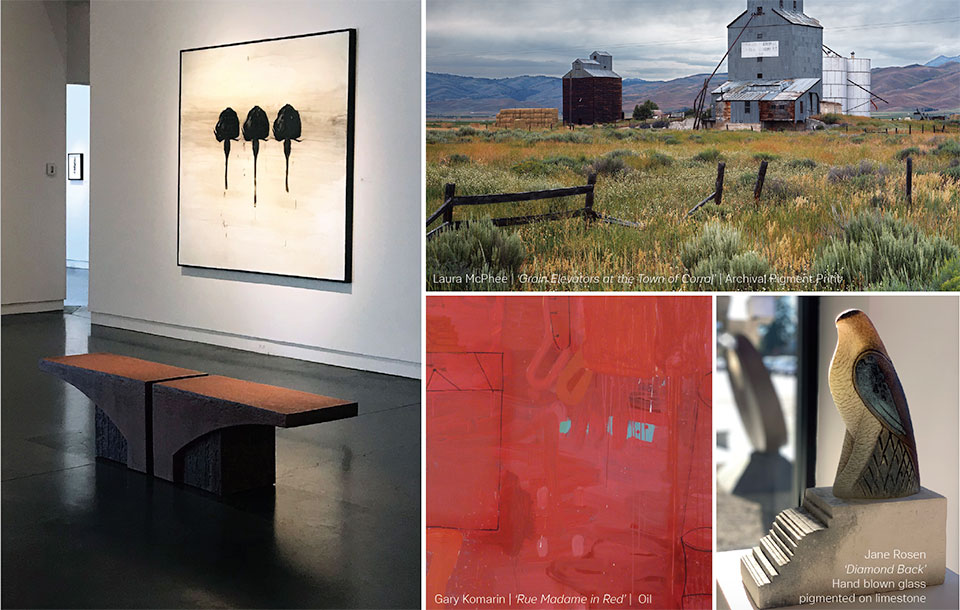
As millions of Americans follow prudent health practices while working and learning remotely, our homes have become the focus of our lives. Any avid art lover would agree—art plays a significant role in enhancing and personalizing our havens.
To provide their collectors with visual access to the gallery’s portfolio of artists, like others, Gail Severn Gallery has developed more digital content, including recorded artist chats and digital exhibition catalogs. Expanding their online presence for collectors has also strengthened their relationships with architects, designers, and consultants, both locally and across the country. Severn has welcomed opportunities this year to meet many new intermediary professionals assisting clients with art acquisitions. Collaborative relationships with professionals from other states have increased with the influx of art-buying residents relocating to the Wood River Valley.
“We are thrilled to be welcoming new residents to town as well as seeing all the familiar faces. We hope that many new residents will consider local galleries when choosing work for their homes, and we look forward to seeing them in the gallery,” says Meredith Skillman, Gallery Registrar.
Severn’s represented artists and their clients are supported by a staff of nine professionals, including art historians, educators, consultants, appraisers, installers, and framers. Frequently the team acts as art advisors, providing help choosing works and deciding on best placement within a client’s residence.
Gallery Director Shannon Daley offers, “The experience of sheltering in place, for many of our clients, provided time to think about their collections.”
Severn Art Services is a wholly complementary unit of the art sales side of the business. This year, Severn’s competent team has helped clients with rehanging their collections, reframing, shipping, storing work, and coordinating maintenance and repair. While artworks enrich our environments, they are also assets that can require valuations, inventorying, and estate planning. Art appraisal for insurance purposes is the most recently added offering to the gallery’s suite of services. With certification through the Appraisers Association of America, gallery owner Gail Severn and her gallery registrar, Meredith Skillman, are on track to becoming credentialed fine art appraisers.
THE ART OF TECHNOLOGY: Gilman Contemporary | L’Anne Gilman
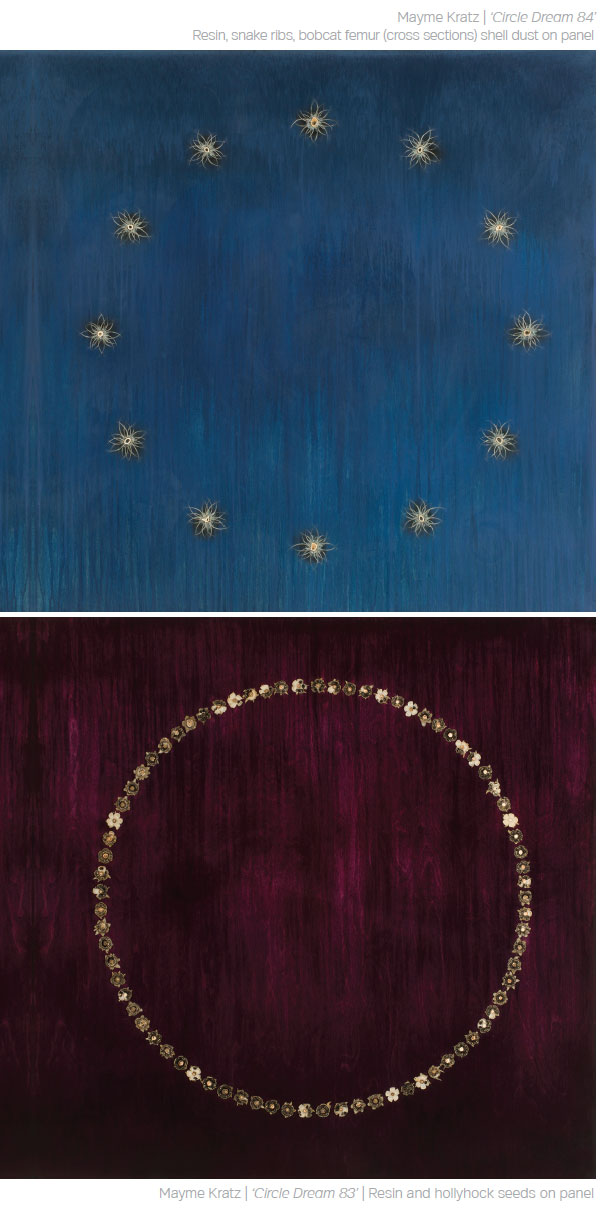
L’Anne Gilman launched her gallery, Gilman Contemporary, in 2007—inauspicious timing as it turns out. Gilman had to draw upon her steel magnolia Southern fortitude that summer when nine different wildfires threatened Ketchum and the neighboring communities of Sun Valley and Hailey, only to be followed by the subprime mortgage crisis that ushered in the 2008 Great Recession.
Despite the challenging start, they received a welcome reception from local contemporary art lovers, and Gilman and her team have also increased their following with national and international clients finding the gallery online. Collectors have become clients without ever having crossed the gallery’s threshold.
Recognizing a growing remote market for their collective of contemporary artists, L’Anne Gilman, gallery director Casey Hanrahan, and associate Beth Rush began working before the pandemic and shut-down last spring on new ways to present an artist’s work or an exhibition virtually. One solution enables collectors from afar to perceive every work’s scale, medium, texture, and other artistic nuances.
Working with a London-based firm, the gallery built a virtual replica of their space to create interactive exhibitions. Viewers can experience the installations on their computers as if they’re walking among the works themselves. Details and answers to inquiries about each piece can be obtained with the click of a mouse.
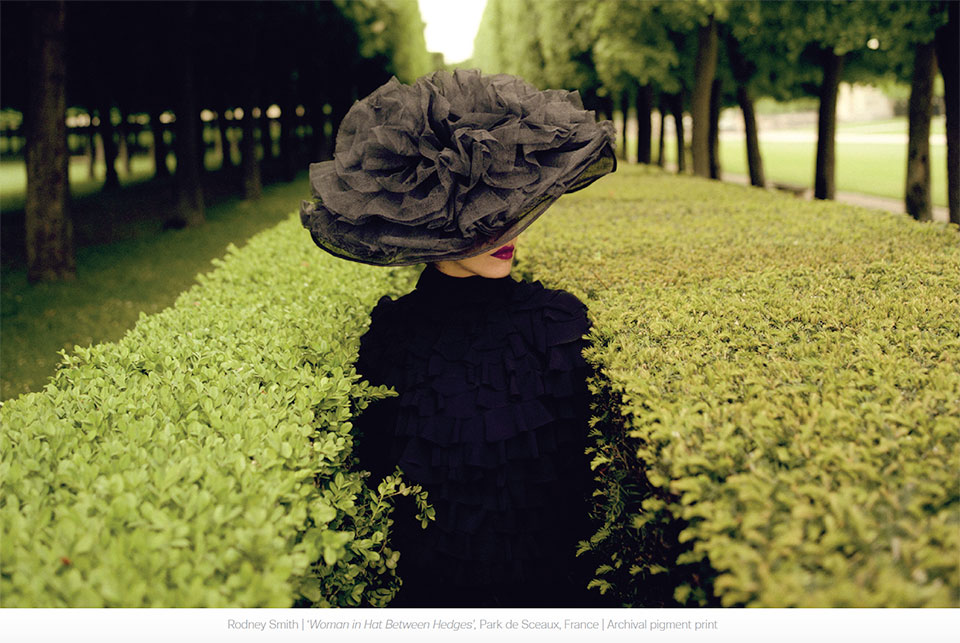
“The interactive digital tool allows us to connect more substantively with out-of-area clients who might be seeing an artist’s body of work for the first time. Thus far, this tool has been effective for placing our artists’ work,” says Gilman.
Gilman also introduced a customized smartphone application pre-pandemic. Those eager to envision their spaces transformed with works of art can take photos of their location and instantly view artwork to scale from the gallery’s inventory. Even the least technologically inclined can make quick adjustments to accommodate for angle, light, and room environments. No measuring or specialized software is required.

ACADEMIA + ART ECONOMICS: Boise State University | Sue Latta
“The art world can survive—and even thrive—if it embraces technology, collaboration, and transparency.”
–Andrew Goldstein, Editor-in-Chief, Artnet News
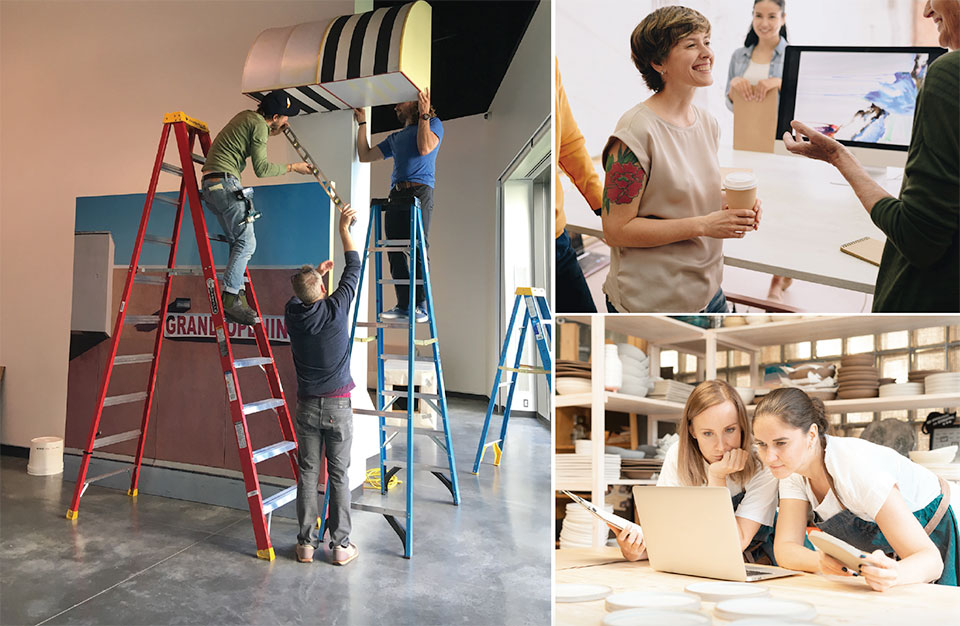
As the past four examples have shown, success in the art world requires more than just a passion for fine art—it requires business acumen and the ability to manifest a career in a competitive environment. Idaho’s largest higher learning institution, Boise State University, offers students just this set of skills in their Minor in Arts Entrepreneurship program. Inaugurated in 2018, much of the curriculum was developed by BSU School of the Arts lecturer and prolific visual artist Sue Latta, MFA.
“Found within the creative economy is a multitude of avenues for professional pursuits beyond the narrow view of fine art creation. Artists are finding many other entrepreneurial ways to market their art, such as reproductions and licensing,” she explains. As Latta conveys to her students, “The landscape is changing, and you’re going to have to carve out your unique path.”
The entrepreneurial program is available for all arts disciplines, enabling visual artists to integrate with music, film, graphic design, literary, and theatre-drawn undergraduates.
Students embark on an educational path of multimedia strategies and applications. They learn to develop a business model and feasibility study of their aspired trajectory. Corporate finance, intellectual property protection, licensing, and sales and marketing are all featured in the syllabus. The driving goal of providing a foundation in business skills is to prepare art students for sustainable careers in the creative sector.
While not every student will become a lauded superstar in the art world, many will become more than “Sunday painters,” existing someplace in the middle. That middle area offers a great range of professional experience available to the artistically inclined. The career landscape for visual artists had been evolving long before the pandemic; COVID-19 just accelerated it.
“Found within the creative economy is a multitude of avenues for profes-sional pursuits beyondthe narrow view of fine art creation. Artists are finding many other entrepreneurial ways to market their art, such as reproductions and licensing. The landscape is changing, and you’re going to have to carve out your unique path.”
–Sue Latta, MFA, Visual Artist, BSU School of the Arts lecturer
Within the art market, as in every other economic sector, those entities that will endure are those willing to adopt novel tools, develop differentiating skills, and expand the options of experiences for customers to engage.
